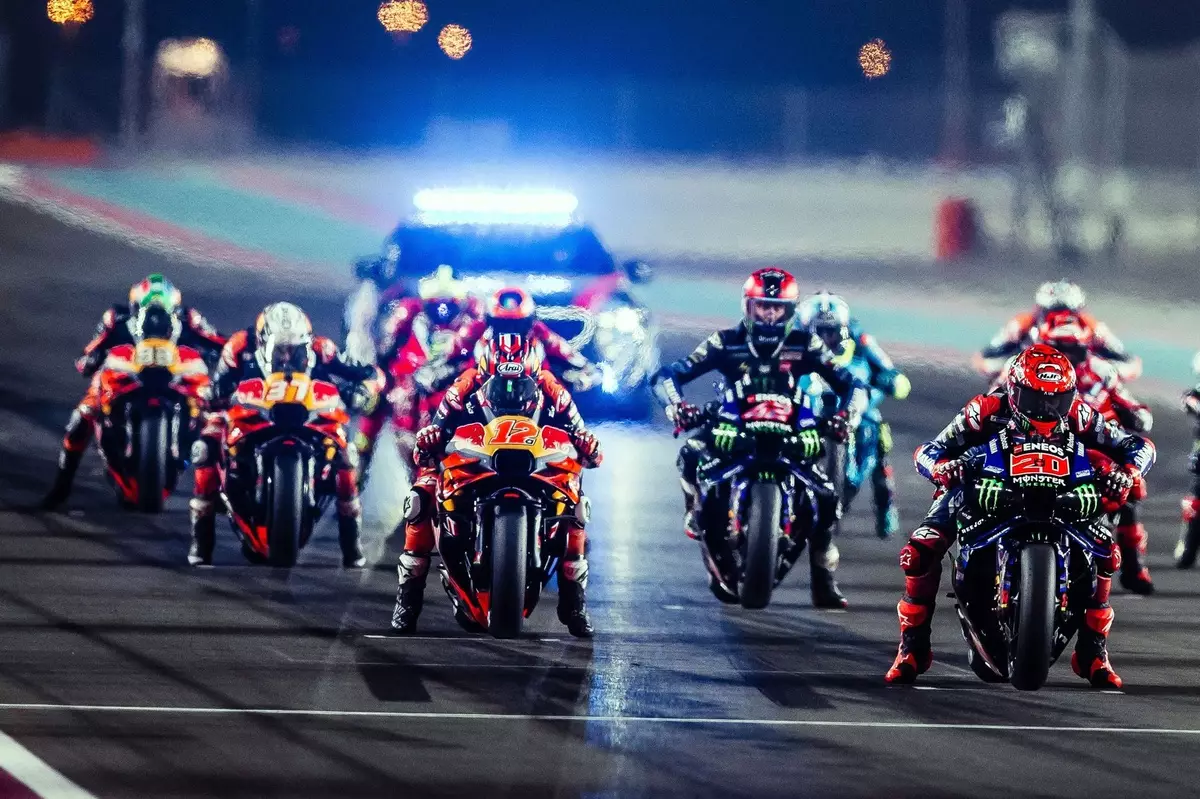In the fast-paced world of MotoGP, where every second counts, the debate over tyre pressure rules has ignited passionate discussions among riders, teams, and fans alike. The topic came to a head during the recent race in Qatar, when Maverick Vinales was penalized for his front tyre being below the prescribed pressure limits, resulting in a staggering demotion from second place to fourteenth after a 16-second penalty. This punitive measure, which was unveiled post-race, reflects a growing concern about the intricate balance between performance and safety in motorcycle racing.
Since the implementation of tyre pressure regulations set by Michelin in the 2023 British Grand Prix, riders have expressed mixed feelings towards these rules. While they have undoubtedly highlighted the importance of tyre performance, they also impose a technical barrier that many fans perceive as arcane. The prevailing sentiment among the top riders, however, is surprisingly unified: these controversial rules are here to stay, at least until 2027, when a potential transition to a new tyre supplier is on the horizon.
Safety as the Driving Force
Franco Morbidelli, currently sitting fourth in the points standings, encapsulated the rationale for maintaining the tyre pressure limits, emphasizing that the unique demands placed on tyres during races necessitate certain safety thresholds. “The MotoGP bike is really aggressive and it’s really strong in its demands of the tyres,” he stated clearly. It’s a reminder that while racing can evoke thrills and excitement, the need to prioritize safety cannot be overlooked.
Marc Marquez—one of the sport’s most iconic figures—echoed this sentiment. While he insisted on the importance of these safety measures, he did propose a potential revision. Marquez asserted that the regulation requiring tyres to exceed the pressure limit for 60% of the race could be reconsidered. This revision aims to alleviate the burden on teams, particularly in scenarios where, after taking the lead, race conditions might lead to unexpected drops in tyre pressure.
The insight provided by Marquez is crucial; it highlights the complexity of racing strategies and how minute adjustments can lead to significant impacts on competition. By advocating for a slight change in this rule, Marquez opens a discourse on how regulations can be adapted without losing the core principle of safety.
Equality in the Face of Adversity
Argumentation surrounding the tyre pressure rules is often rooted in fairness. Francesco Bagnaia, a double world champion and fellow Ducati rider, noted that strict adherence to these rules doesn’t seem to unfairly hinder performance. He maintained that the set limits were reasonable enough to not significantly affect the racing experience, despite historical precedents that allowed for lower pressures. This observation invokes a broader context regarding how racing evolves; what might have been acceptable years ago may not meet modern safety standards.
It’s also worth noting Vinales’s perspective on the penalty system. He demonstrated an understanding of the intricate dynamics at play when one finds themselves unexpectedly leading a race. His dilemma during the Qatar race—calculating tyre pressures based on anticipated group racing only to find himself solo and vulnerable—shed light on how rapidly changing race conditions can complicate adherence to technical rules. Vinales suggests a rethinking of how penalties are structured, indicating that stricter penalties could paradoxically encourage more risky behaviour among riders if the stakes don’t feel high enough.
Looking Ahead: The Future of MotoGP Regulations
As the championship progresses, it is clear that the tyre pressure rules are a double-edged sword. They ensure a standard of safety that is vital in a sport as inherently perilous as motorcycle racing. Yet, they also present a complex challenge for teams and riders striving for excellence. The shared commitment among the top riders to retain these rules—while potentially adjusting aspects of them—speaks to a maturity in the sport.
With the prospect of a new tyre supplier in 2027 looming on the horizon, the opportunity for a comprehensive assessment of current regulations may soon arrive. It raises the question: will a new supplier bring about a change in rules reflective of advances in technology and safety?
Until that transition occurs, one thing remains clear: the narrative around tyre pressure regulations continues to evolve, shaped by the voices of those most impacted by it. Riders and teams alike must navigate this challenging terrain with an eye toward safety, fairness, and precision in the pursuit of speed on the track.


Leave a Reply